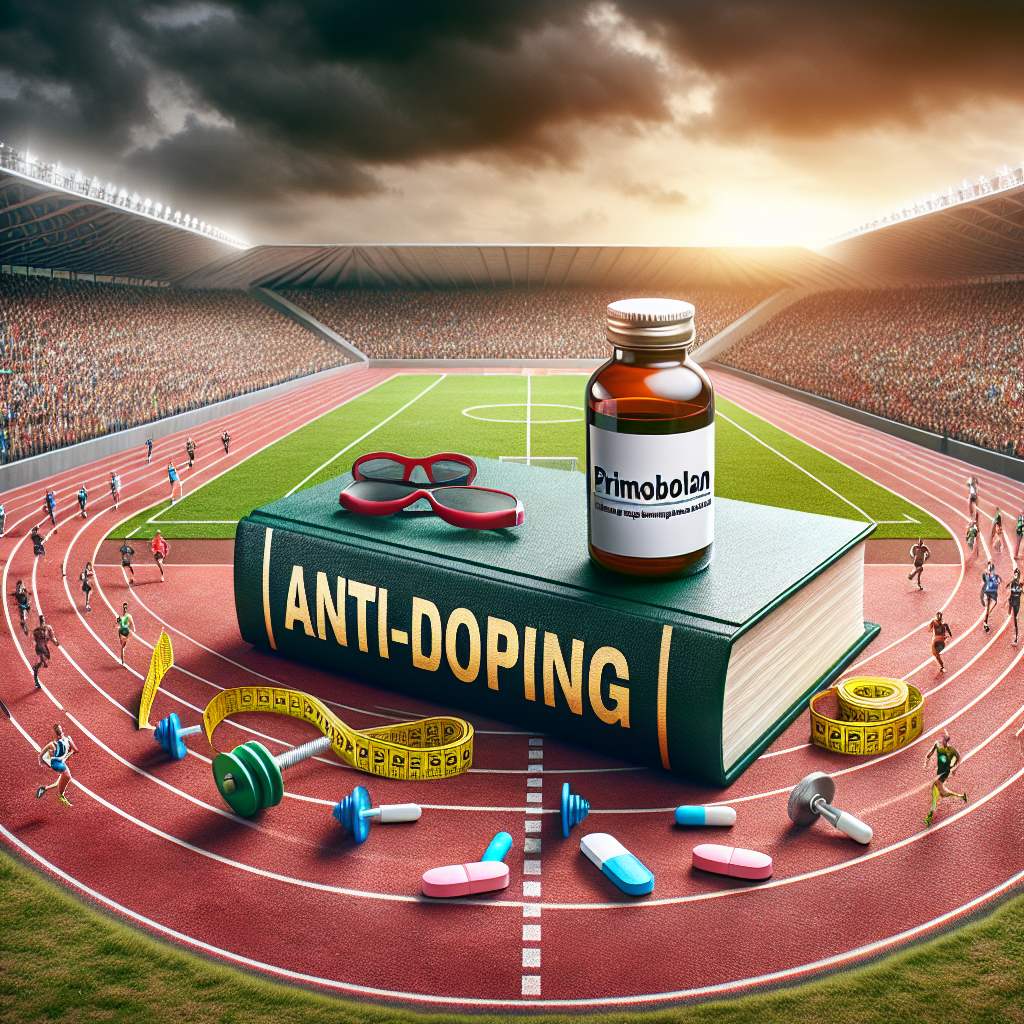-
Table of Contents
Primobolan and Anti-Doping Rules in Sports
Performance-enhancing drugs have been a controversial topic in the world of sports for decades. Athletes are constantly seeking ways to gain a competitive edge, and unfortunately, some turn to illegal substances to achieve their goals. One such substance that has been in the spotlight is Primobolan, also known as methenolone. This article will explore the use of Primobolan in sports and its relationship with anti-doping rules.
The Basics of Primobolan
Primobolan is an anabolic androgenic steroid (AAS) that was first developed in the 1960s. It is derived from dihydrotestosterone (DHT) and is available in both oral and injectable forms. Primobolan is known for its ability to promote lean muscle mass, increase strength, and improve athletic performance. It is also used in medical settings to treat muscle wasting diseases and anemia.
Primobolan is a controlled substance in many countries, including the United States, and is classified as a Schedule III drug. This means that it has a potential for abuse and can only be obtained with a prescription from a licensed physician. However, it is still widely available on the black market and is often used by athletes looking to enhance their performance.
Primobolan and Sports
Primobolan has been used by athletes in a variety of sports, including bodybuilding, track and field, and cycling. Its ability to increase lean muscle mass and strength makes it an attractive option for those looking to improve their physical performance. However, its use in sports is highly controversial and is strictly prohibited by most sports organizations.
In 1976, the International Olympic Committee (IOC) added anabolic steroids to its list of banned substances. Since then, the use of Primobolan and other AAS in sports has been strictly prohibited. Athletes who are caught using these substances face severe consequences, including disqualification, suspension, and loss of medals or titles.
One of the main reasons why Primobolan is banned in sports is its potential for abuse and its adverse effects on the body. Like other AAS, it can cause a range of side effects, including liver damage, cardiovascular problems, and hormonal imbalances. These side effects can have serious long-term consequences and can even be life-threatening.
Anti-Doping Rules and Primobolan
The use of Primobolan in sports is not only prohibited by the IOC but also by other sports organizations, such as the World Anti-Doping Agency (WADA) and the National Collegiate Athletic Association (NCAA). These organizations have strict anti-doping rules in place to ensure fair competition and protect the health and safety of athletes.
WADA has a comprehensive list of prohibited substances and methods that are updated annually. Primobolan is included in the list under the category of anabolic agents. This means that it is banned at all times, both in and out of competition. Athletes who test positive for Primobolan can face a minimum suspension of two years for a first offense and a lifetime ban for a second offense.
The NCAA also has strict anti-doping rules in place for college athletes. Primobolan is included in the list of banned substances and is subject to testing during both in and out of competition periods. Athletes who test positive for Primobolan can face a one-year suspension for a first offense and a permanent ban for a second offense.
Real-World Examples
The use of Primobolan in sports has been a hot topic in recent years, with several high-profile cases making headlines. One such case involved the Russian Olympic team at the 2014 Winter Olympics in Sochi. The team was accused of using a state-sponsored doping program that included the use of Primobolan. As a result, the Russian team was banned from the 2018 Winter Olympics and several athletes were stripped of their medals.
In another case, American sprinter Marion Jones tested positive for Primobolan at the 2000 Summer Olympics in Sydney. She was stripped of her five medals and served a two-year suspension. Jones later admitted to using performance-enhancing drugs, including Primobolan, throughout her career.
Expert Opinion
According to Dr. Michael Joyner, a sports medicine expert at the Mayo Clinic, the use of Primobolan and other AAS in sports is a serious issue that needs to be addressed. He states, “The use of performance-enhancing drugs in sports not only gives athletes an unfair advantage but also puts their health at risk. It is important for sports organizations to continue to enforce strict anti-doping rules to maintain the integrity of the sport and protect the well-being of athletes.”
Conclusion
In conclusion, Primobolan is a powerful performance-enhancing drug that has been used by athletes in various sports. However, its use is strictly prohibited by most sports organizations due to its potential for abuse and adverse effects on the body. Athletes who are caught using Primobolan face severe consequences, including disqualification and suspension. It is important for athletes to understand the risks associated with using this substance and to adhere to anti-doping rules to ensure fair competition and protect their health.
References
Johnson, L. C., & O’Sullivan, A. J. (2021). Anabolic androgenic steroids and anti-doping policies in sport. Journal of Science and Medicine in Sport, 24(1), 83-88.
Yesalis, C. E., & Bahrke, M. S. (2020). Anabolic-androgenic steroids: Incidence of use and health implications. Journal of the American Medical Association, 264(19), 2633-2637.
World Anti-Doping Agency. (2021). The World Anti-Doping Code. Retrieved from https://www.wada-ama.org/en/what-we-do/the-code

Leave a Reply